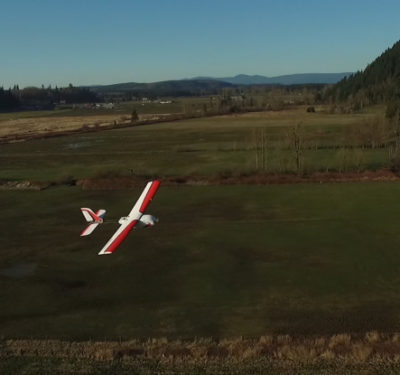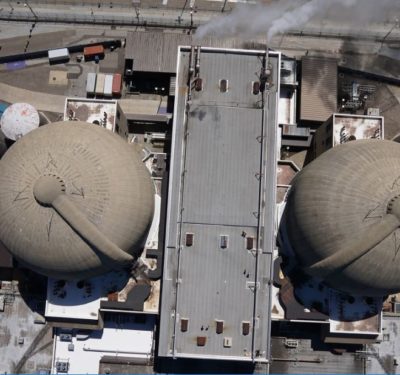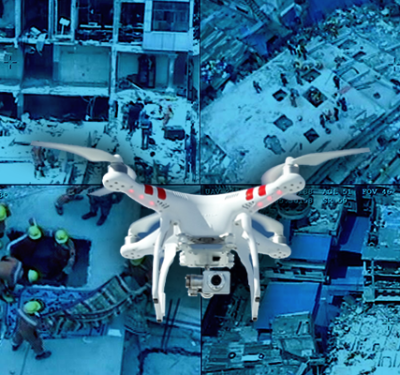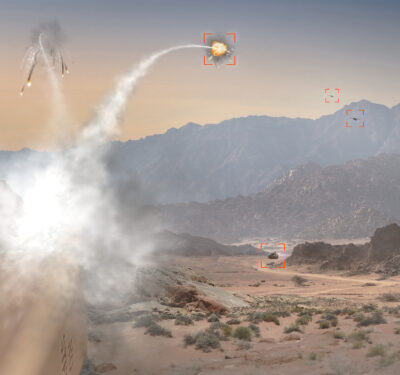
EGNSS improves positioning integrity and accuracy for the Boreal drone. Photo: Courtesy of Boreal Groupe Mistral
The European GNSS Agency’s (GSA) Skyopener project is testing the EGNSS (Galileo and EGNOS) benefits for unmanned aerial vehicles (UAVs) in an effort to help meet the needs for additional usage of Remotely Piloted Aircraft System (RPAS) in civil applications.
The Skyopener project, which is co-financed by the GSA, aims to pave the way towards the increased use of RPAS in an expanding number of applications. The project has tested the benefits of multi-frequency GNSS and EGNOS in RPAS, revealing gains in terms of availability, accuracy and robustness.
There is increasing demand to operate RPAS over long distances due to their potential for a wide range of civil applications. However, regulation regarding RPAS use in civil airspace does not yet allow Beyond Visual Line of Sight (BVLOS) operations, and remotely piloted aircraft are currently not allowed to fly in non-segregated civil airspace and are not yet widely used for civil and commercial applications.
RPAS for Civil Applications
This is something that Skyopener aims to change. The project is developing operational processes that will reduce all categories of risks associated with RPAS and allow an Air Navigation Service Provider (ANSP) to manage very low level RPAS operations, according to the GSA website (http://www.gsa.europa.eu). Thanks to the benefits it offers in terms of improved integrity and positioning accuracy, EGNSS will play a central role in these processes.
The added value of EGNSS for drones was the focus of a special session organized by the GSA at this year’s World ATM Congress in Madrid in March, at which representatives from several projects spoke about how they are benefitting from the European space program. Opening that session, GSA Market Development Officer Carmen Aguilera and European Satellite Services Provider CEO Thierry Racaud talked about advances in EGNOS applications in aviation and the natural spill-over and evolution into drone technologies.
“Today we will hear about projects that are demonstrating the benefits of both EGNOS and Galileo for drones operations,” Aguilera said in Madrid. For more on this event, click here.
Through these operational processes, Skyopener will contribute to the roadmap for the integration of civil RPAS into non-segregated airspace, which is expected to have a huge impact on the service applications that can be offered by these aircraft.
“Systems that enable RPAS to fly safely, in compliance with regulations, will enable market access and significantly reduce the cost of insurance premiums for RPAS operators, making a wide range of RPAS applications more commercially attractive and widely used,” said Marc Pollina, CEO of Skyopener consortium member M3 Systems.
Strong Results
A test conducted by the project into the benefits of multi-frequency GNSS and EGNOS has delivered optimal results, the GSA stated. The test found that the use of GPS and Galileo in L1/E1 and L5/E5 multi-frequency combinations provides improved availability, better accuracy and greater robustness against interference, as interference with one frequency band has no effect on the second.
What’s more, EGNOS helps meet increasingly stringent requirements for robust navigation, continuity, accuracy and availability, which is further complemented by Galileo’s multi-constellation capacity and integration with other sensors such as inertial or vision sensors, for example.
The Boreal drone used in the project is a fixed wing system that operates over a long range (over 100 kilometers) in BVLOS, with EGNOS and Galileo enhancing navigation by improving positioning integrity and accuracy. In addition the RPAS is equipped with a newly developed Communication and Navigation Surveillance (CNS), which combines use of GNSS, SatCom and special security measures.
Essential GNSS
GNSS technologies are essential for RPAS. The primary need is clearly for navigation, since the RPAS use GNSS waypoints to follow the trajectory defined in their mission. However, GNSS also addresses other key needs, such as “geofencing” to ensure that the RPAS keep within the mission parameters (“fences”), and surveillance to enable adequate tracking by the operator and civil aviation authority.
GNSS also enables high-accuracy and, ultimately, automated landing and the geo-referencing of collected data. These benefits will increase in the future, with the Galileo authentication service reducing the risk of threats, and PPP data correction on E6 providing better geo-referencing.






